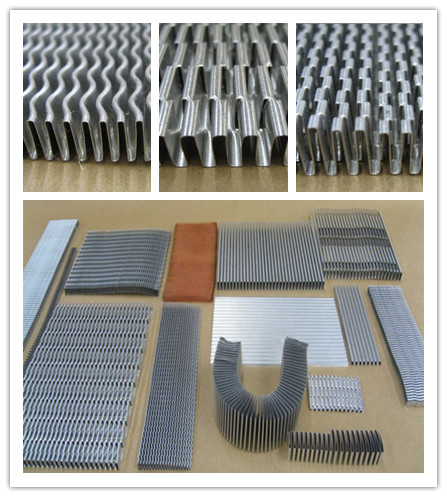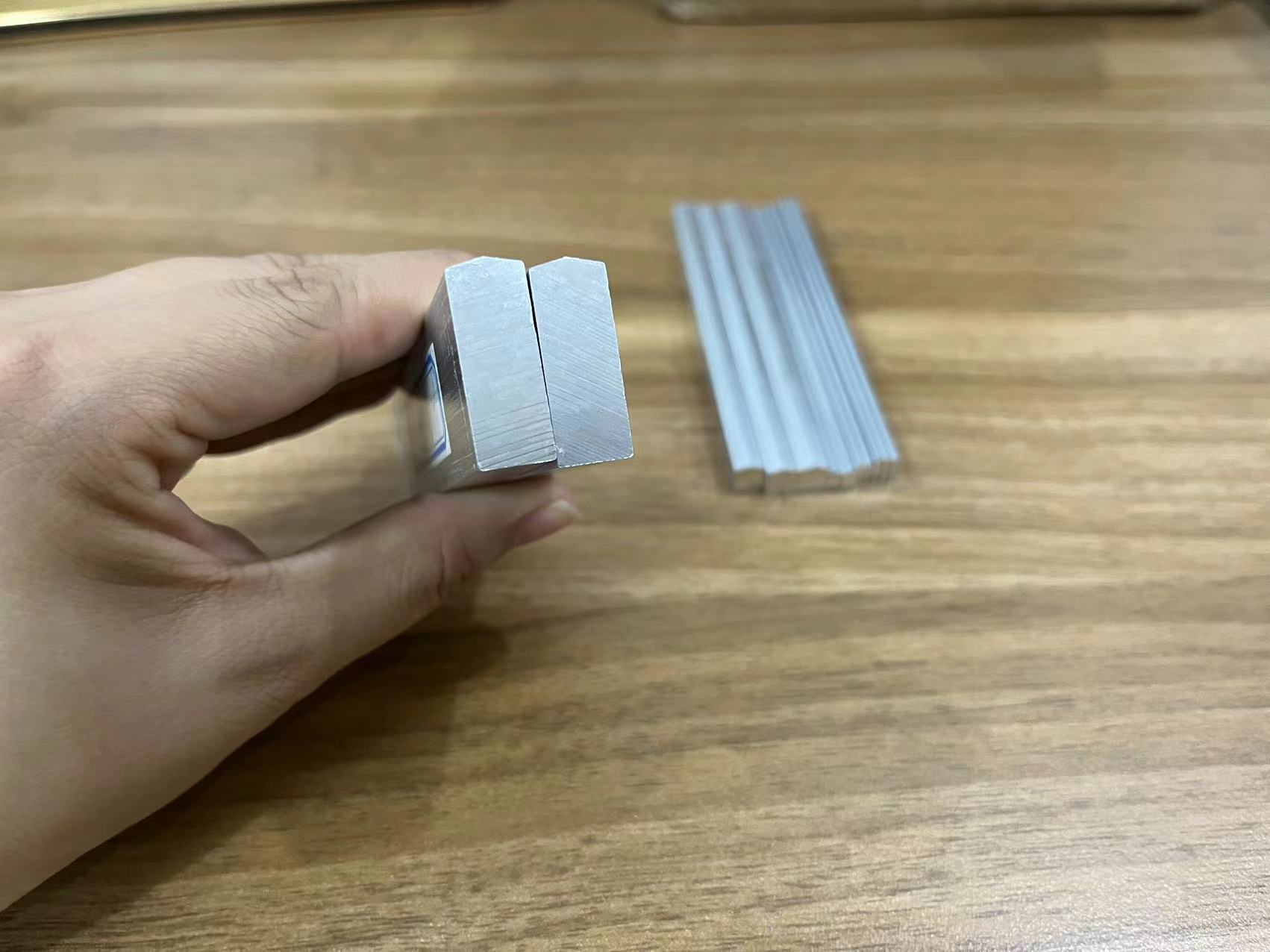

The main components of a typical plate-fin heat exchanger include fins, baffles, seals, guide vanes and heads.
1. Fins
Fins are the basic components of aluminum plate-fin heat exchangers. The heat transfer process is mainly completed through fin heat conduction and convective heat transfer between fins and fluids. The main function of fins is to expand the heat transfer area,
improve the compactness of the heat exchanger, improve the heat transfer efficiency, and also support the baffle to improve the strength and pressure bearing capacity of the heat exchanger. The pitch between fins is generally from 1mm to 4.2mm. There are many types and types of fins. Commonly used forms include serrated, porous, straight, corrugated, etc. There are also louvered fins, strip fins, nail-shaped fins, etc. in foreign countries.

2. Baffles
The baffle is a metal plate between two layers of fins. It is covered with a layer of brazing alloy on the surface of the parent metal. During brazing, the alloy melts and the fins, seals and metal plates are welded into one. The partition separates the two adjacent layers, and the heat exchange is carried out through the partition. The commonly used partition is generally 1mm~2mm thick.
3. Seal
The seal is around each layer, and its function is to separate the medium from the outside world. The seal can be divided into three types according to its cross-sectional shape: dovetail groove shape, channel steel shape and waist drum shape. Generally, the upper and lower sides of the seal should have a slope of 0.3/10, so that when it is combined with the partition into a plate bundle, a gap is formed, which is conducive to the penetration of the solvent and the formation of a full weld.

4. Guide vane
The guide vane is generally arranged at both ends of the fin. In the aluminum plate fin type
heat exchanger, it mainly plays the role of guiding the inlet and outlet of the fluid, so as to facilitate the uniform distribution of the fluid in the heat exchanger, reduce the flow dead zone, and improve the heat exchange efficiency.
5. Head
The head is also called a header box, which is usually welded together by the head body, pipe, end plate, flange and other parts. The function of the head is to distribute and gather the medium, connect the plate bundle and the process pipeline.
In addition, a complete plate-fin heat exchanger should also include auxiliary devices such as supports, lifting lugs, and thermal insulation layers. The supports are connected to the bracket to support the weight of the heat exchanger; the lifting lugs are used for hoisting the heat exchanger; the outside of the aluminum plate-fin heat exchanger generally needs to be insulated. Usually, dry pearl sand, slag wool or rigid polyurethane foaming methods are used.